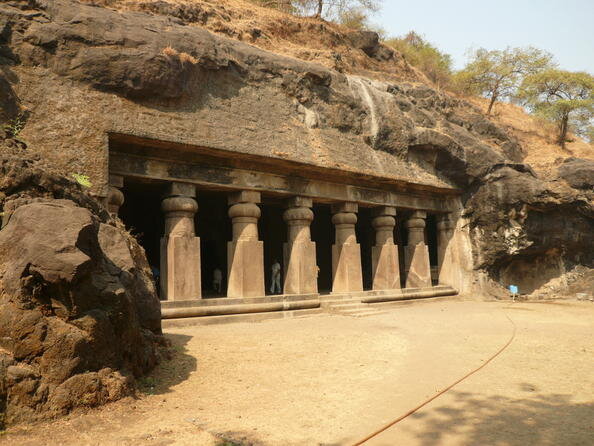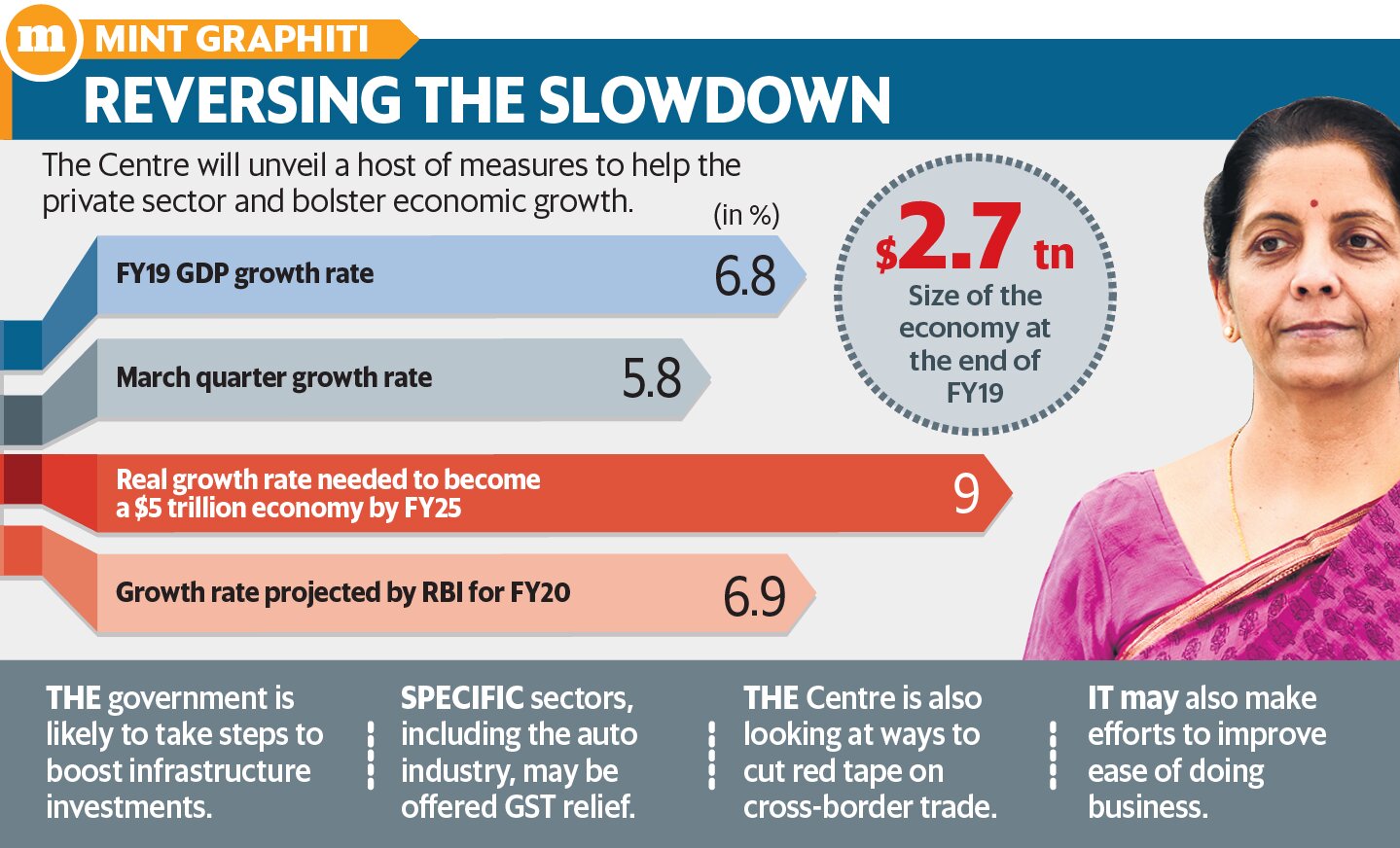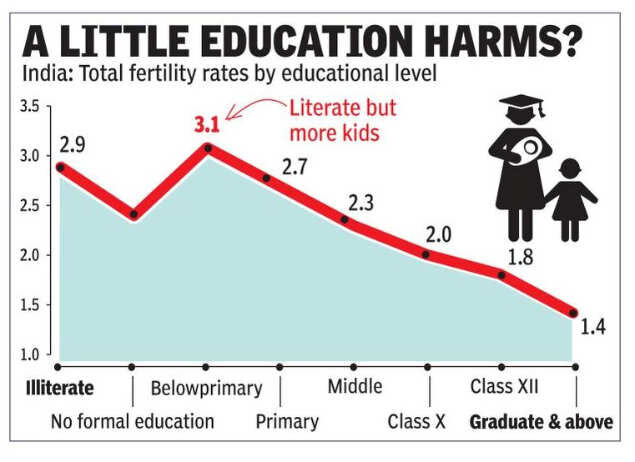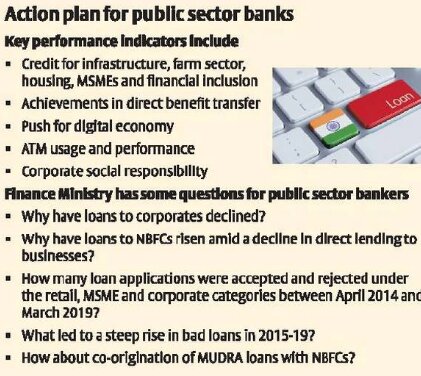Indian Economy
Stimulus Package to Reverse Economic Slowdown
Recently, many economic indicators have pointed to a sharp slowdown in demand, both in rural and urban India.
- For instance, the automobile sector is facing a prolonged slump in demand, leading to massive job losses.
- In this context, the government looks to reverse economic slowdown with a stimulus package.
Reasons for the Slowdown
- India’s merchandise exports have contracted, signalling the impact of US-China trade war.
- Poor sentiment in the equity markets and in the banking sector have led to stalling the investment in India.
- With domestic economic activity remaining weak, while the global slowdown and trade tensions have intensified, there are further chances of intensification of this slowdown.
- In this scenario, the industry has demanded a stimulus package of ₹1 trillion to initiate an investment cycle amid slowing global and domestic slowdown.
- The government realized that the tight fiscal policy is proving to be counterproductive and that monetary policy alone is not enough to spur economic growth.
- Therefore, it has laid down a set of measures including tax cuts and targeted sops, to reverse an economic downturn.
Proposed Measures
- The measures being considered are:
- The stimulus package will include Rs 100 trillion infrastructure investment over the next five years
- Goods and services tax (GST) relief to specific sectors, including the automobile sector, that could boost demand.
- Reduce Red tape on cross-border trade and improve ease of doing business.
- The government also held that, in an effort to boost exports, it is working on a new World Trade Organization-compliant duty reimbursement scheme.
Significance
- Earlier Fiscal Responsibility and Budget Management (FRBM) Act constrained the government from providing a fiscal push in the Union budget.
- But the government is considering the use of escape clause (in the FRBM Act) for deviation in the fiscal deficit up to 50 basis points.
- It may give the government leeway to spend an additional ₹1.15 trillion in the current fiscal.
- Escape Clause: The panel led by N.K. Singh to review the FRBM Act had suggested an escape clause, allowing deviations up to 0.5 percentage points of Gross Domestic Product, based on triggers including far-reaching structural reforms in the economy with unanticipated fiscal implications, acts of war and farm distress.
Governance
Sabki Yojana Sabka Vikas Campaign
The central government has decided to launch the People's Plan Campaign, also known as “Sabki Yojana Sabka Vikas” from September 2019.
- It aims to draw up Gram Panchayat Development Plans (GPDPs) in the country and place them on a website where anyone can see the status of the various government’s flagship schemes.
Background
- A pilot exercise conducted in 2018 suggests that a majority of the GPs scored between 41% and 50% on a scale of 100, showing glaring deficiencies.
- Merely 0.1% and 0.6% GPs fell in the high 91-100 and 81-90 score respectively.
- A comparison of the performance among the larger states shows that Kerala, Tamil Nadu, and Andhra Pradesh, in that order, were the top scorers, while GPs in Jharkhand, Assam, Bihar, and Madhya Pradesh were at the bottom.
- A recent study of 100 randomly chosen GPs by National Institute of Rural Development has shown that several GP has reported improvements while others have slipped down over the past year. A fresh survey is, therefore, significant.
Gram Panchayat Development Plans
- Gram Panchayats have been mandated for the preparation of GPDP for economic development and social justice utilizing the resources available to them.
- The GPDP planning process will be comprehensive and participatory by involving full convergence with the schemes of all related Central Ministries / Line Departments.
- The People's Plan Campaign initiated under "Sabki Yojana Sabka Vikas" is an intensive and structured exercise for planning at Gram Sabha through convergence between Panchayati Raj Institutions (PRIs) and concerned departments of the State.
About the process
- Gram Panchayat Development Plans (GPDPs) will include 48 indicators covering various aspects such as health and sanitation, education etc.
- After each GP is scored out of 100 — with 30 marks for infrastructure, 30 marks for human development, and 40 marks for economic activity— the GPs will be ranked.
- The data on the 48 indicators would come from Census 2011 (for physical infrastructure), Socio-Economic Caste Census 2011 (for Household-level deprivation data), and fresh survey starting in September 2019 that will be carried out by local facilitators.
- The score for each GP will reflect the local needs and priorities.
- For instance, for a drought-prone area, water conservation would be accorded the highest priority.
- Within this ranking, households suffering the worst deprivations would be prioritised further.
- The entire ranking exercise is meant to identify the gaps at the GP level, make an assessment of where it stands, and accordingly plan the interventions.
National Institute of Rural Development and Panchayati Raj
- The National Institute of Rural Development and Panchayati Raj (NIRD&PR) is an autonomous organisation under the Union Ministry of Rural Development.
- It is recognized internationally as one of the United Nations Economic and Social Commission for Asia and the Pacific (UNESCAP) Centres of Excellence.
- It builds capacities of rural development functionaries, elected representatives of PRIs, bankers, NGOs and other stakeholders through interrelated activities of training, research and consultancy.
- Establishment in 1958, the Institute is located at Hyderabad in Telangana.
- In addition to the main campus at Hyderabad, this Institute has North-Eastern Regional Centre at Guwahati, Assam to meet the NE-regional needs.
Governance
Inverted-J Pattern in Education and Fertility
Recently released official data from 2017 on the Total Fertility Rate (TFR), reflects a complex relationship between literacy level and fertility rate.
- According to conventional wisdom: The higher the educational level of a woman, the lower the fertility rate.
- However, there’s a consistent pattern across states of illiterate women and those with no formal education having lower fertility rates than those with below primary level education.
- Culture of the state is believed to have a greater influence than education.
Pattern from TFR data
- The relationship between fertility and education resembles an inverted-J pattern.
- Usually, there is an inverse relationship between education or income and fertility, but it has been observed that fertility could go up with a slight increase in education or income level.
- But eventually, fertility declines with higher levels of education.
Highlights of the Report
- In Bihar, the TFR of women who have not completed primary schooling is 4.4 compared to 3.7 for illiterate women.
- Similarly, in Odisha with an overall low fertility rate of just 1.9, the TFR of illiterate women was 2 compared to a TFR of 3.6-3.5 among those with primary level schooling or below.
- At the all-India level, the TFR for women with below primary education was 3.1 compared to 2.9 for illiterate women and 2.4 for those without formal education.
However, according to demographers and population experts, It is very early to come up with some conclusion. Similar pattern has to emerge for three or four years (above mentioned pattern is only for the year 2017), so that this Inverted J-curve can be approved as a theory.
Agriculture
Mobile Application to Aid Farmers
Government to launch a new mobile application, “Uber for tractors”, which will help in hiring of expensive agricultural equipment.
- Customer Hiring Centres (CHCs) will be connected with the help of this app, just like the Uber connects an individual with cabs.
- There are now more than 38,000 custom hiring centres (CHCs) across the country, which rent out 2.5 lakh pieces of farm equipment every year.
- The app will show the CHCs which have the equipment available within 5, 20 and 50 km of location, with their rates.
Benefits
- Informed Decisions: Feedback from both the CHC and the farmers will allow customers to make informed decisions.
- Database: The app will also create an invaluable database for policy-makers, who can track the use and cost of equipment.
- Promotion of New Technology: The system would also help to track the usage of new technology that the government wants to promote, such as the Happy Seeder that aims to prevent stubble burning that causes air pollution, or solar dryers that can help farmers process and preserve their produce.
Solar Dryers
- Solar dryers uses solar energy in drying applications.
- They use air heated through solar energy collectors, which can be installed in modules according to the requirements of hot air.
- They have numerous applications in industries such as textiles, food processing, paper, pharmaceutical, and agro-industries.
Customer Hiring Centres
- Customer Hiring Centres (CHCs) are basically a unit comprising a set of farm machinery, implements and equipment meant for hiring by farmers.
- Marginal farmers (Farmers whose land holdings are less than two hectares of land), by virtue of their economic condition are unable to own farm machinery on their own or through institutional credit.
- Therefore in order to bring farm machinery available within the reach of small/marginal holdings, collective ownership or Custom Hiring Centres are being promoted in a big way.
- Ideally, the CHCs should be located within a radius of 5 to 7 kms of land holdings. This will reduce the transport cost and time of transport of agricultural machinery.
Economy
Performance Indicators for Public Sector Banks
The Finance Ministry to closely monitor the Public Sector Banks (PSBs) achievements on 16 Key Performance Indicators (KPIs) at the branch, region, state and national level in order to address the continuing decline of PSBs shares in Indian banking.
- PSBs’ market share is declining while that of private banks is rising.
- As of end-December 2018 PSBs accounted for 63% of the outstanding credit of scheduled commercial banks against 67% as of June-end 2017.
- The fall comes in the backdrop of these banks facing asset quality issues since 2015.
- Further, Non-Banking Financial Companies (NBFCs) are borrowing from banks and are able to attract customers in spite of higher interest rates.
- The 16 KPIs include- Credit for infrastructure, Farm sector, Blue economy, Housing, MSMEs, Stand-Up India scheme, Education, Exports, Green economy, Cleanliness activities, Financial inclusion and women’s empowerment; and others such as direct benefit transfer, digital economy, ATM usage and performance, ease of living and corporate social responsibility.
- The banks will then be benchmarked against the 18 PSBs’ average. If found lagging, specific action will be taken after consultation at various levels to improve their performance.
Science & Technology
First Contract for NSIL
Recently, New Space India Limited (NSIL), the newly created second commercial arm of the Indian Space Research Organisation, has bagged its first contract.
- A private US space services provider: Spaceflight, has booked ISRO’s Small Satellite Launch Vehicle (SSLV), which is yet to be tested, for launching a spacecraft.
Small Satellite Launch Vehicle
- The SSLV is the smallest vehicle weighing only 110-tonne.
- It would take only 72 hours to integrate, unlike the 70 days taken for launch vehicles like Polar Satellite Launch Vehicle (PSLV) or Geosynchronous Satellite Launch Vehicle(GSLV).
- Cost-effective: Its cost would be around Rs. 30 crores.
- It will be an on-demand vehicle.
- SSLV is perfectly suited for launching multiple microsatellites at a time and supports multiple orbital drop-offs.
- The SSLV can carry satellites weighing up to 500 kg to Low Earth Orbit while the PSLV can launch satellites weighing in the range of 1,000 kg.
- A low Earth orbit (LEO) is an orbit around Earth with an altitude above the Earth's surface of 2,000 kilometres (1,200 mi), and an orbital period between about 84 and 127 minutes.
- The SSLV can carry satellites weighing up to 500 kg to Low Earth Orbit while the PSLV can launch satellites weighing in the range of 1,000 kg.
- ISRO’s SSLV was originally scheduled to have its first development flight on July 2019 but got delayed to end of 2019.
New Space India Limited
- The establishment of NSIL was announced in Budget 2019.
- One of the mandates of NSIL is to mass-produce and manufacture the SSLV and the more powerful PSLV in partnership with the private sector in India through technology transfers.
- Its aim is to use research and development carried out by ISRO over the years for commercial purposes through Indian industry partners.
- It differs from ISRO’s existing commercial arm Antrix Corporation:
- Antrix will handle ISRO’s commercial deals for satellites and launch vehicles with foreign customers.
- NSIL will deal with capacity building of local industry for space manufacturing.
Indian Economy
Scheme for Used Cooking Oil
On the occasion of World Biofuel Day, the Minister of Petroleum and Natural Gas released the Expression of Interest (EOI) for procurement of biodiesel made from Used Cooking Oil (UCO).
- The entrepreneurs setting up biodiesel plants (using used cooking oil as their raw material) to get remunerative price and assurance of complete offtake of production by the oil companies for the purpose of blending with normal diesel.
- The Minister also launched a ‘Repurpose Used Cooking Oil (RUCO)’ sticker and a phone app to enable the collection of used cooking oil.
- Restaurants and hotels interested in supplying used cooking oil can affix the sticker to show availability.
Background
- The announcement comes just a day after the Food Safety and Standards Authority of India (FSSAI) directed Food Safety Commissioners to ensure that Food Business Operators (FBOs), whose consumption of edible oils for frying is more than 50 litres per day, stop reusing the oil more than three times.
- FSSAI is planning to launch a mobile app for tracing and tracking used cooking oil.
- FSSAI is also planning to ask cooking oil manufacturers to come out with colour charts (either on the product or in a booklet along with the product) that will help people to identify if the oil is fresh or re-used.
- The order is aimed at ensuring that reused cooking oil is neither directly used in food preparation nor re-enters the food chain i.e. to set in safety standards in the food industry.
- When used multiple times, cooking oil becomes acidic and darkens in colour. This may alter the fatty acid composition of the oil.
Other Initiatives Taken for Boosting Production of Biofuels
- The Ministry of Petroleum and Natural Gas is working on a four-pronged strategy in this regard -promoting Ethanol, 2-G ethanol, Compressed Biogas (CBG) and Bio-diesel.
- The ethanol blending in Petrol has gone up from 1% to about 8% and is likely to touch 10%.
- The Budget 2019-20 underlined the transformation of farmers from Annadata to Urjadata.
- The Government is planning to allow production of ethanol from surplus food grains which sometimes go waste and also entail expenditure on storage.
- The City Gas Distribution (CGD) network is being set up in over 400 districts which will give a big fillip to the use of CBG.
- Biogas is purified to remove carbon dioxide and hydrogen sulphide gases to prepare CBG.
- CBG has calorific value and other properties similar to Compressed Natural Gas (CNG) and hence can be utilized as green renewable automotive fuel.
Indian Heritage & Culture
India’s First and Longest Sea Ropeway
India’s first and longest sea ropeway project that will connect Mumbai with the Elephanta Caves, is scheduled to start by the end of the year 2019.
- The 8-km ropeway will begin from Sewri in Mumbai’s east coast and end at Raigad district’s Elephanta Island.
- Need: The caves see an annual footfall of nearly seven lakh visitors and are one of the must-visit places around Mumbai. Presently, it takes around an hour for the 10-km cruise from Mumbai and vice versa.
- The 14-minute ride by 30-seater cable cars will give a major boost to tourism.
- It is Rs. 700 crore PPP (Public-Private Partnership) project which will be executed by the Mumbai Port Trust, under the Ministry of Shipping.
Elephanta Caves
- The Elephanta caves, located on the Elephanta Islands (in the Arabian Sea), off Mumbai, was declared a world heritage site by UNESCO in 1987.
- Known locally as Gharapuri Caves, these were constructed about the mid-5th to 6th centuries AD.
- The seven caves constitute one of the most striking collections of rock-art in India.
- There are two groups of caves. To the east, Stupa Hill (named because of a small brick Buddhist monument at the top) contains two caves, one of which is unfinished, and several cisterns.
- To the west, the larger group consists of five rock-cut Hindu shrines.
- The main cave is universally famous for its carvings to the glory of Shiva, who is exalted in various forms and actions. The cave consists of a square plan mandapa whose sides measure about 27 m.
Important Facts For Prelims
Indian National Science Academy
Chandrima Shaha will be the first woman president of the Indian National Science Academy (INSA), taking up the position in January 2020. She was formerly the Director of the National Institute of Immunology, Delhi.
Indian National Science Academy
- The INSA, formerly known as National Institute of Sciences of India (NISI) was established in January 1935 with the object of promoting science in India and harnessing scientific knowledge for the cause of humanity and national welfare.
- In October 1945, the then Government of India recognized the institute as the premier scientific society of India, representing all branches of science.
- It was designated as the adhering organization in India to the International Council for Science (ICSU) on behalf of the Government of India in January 1968.
Note:
- The International Council for Science (ICSU) and the International Social Science Council (ISSC) were merged to form the International Science Council (ISC) in 2018.
- ISC is a non-governmental organization with a unique global membership that brings together 40 international scientific Unions and Associations and over 140 national and regional scientific organizations including Academies and Research Councils.
- The vision of the Council is to advance science as a global public good.
- ISC is headquartered in Paris, France.







